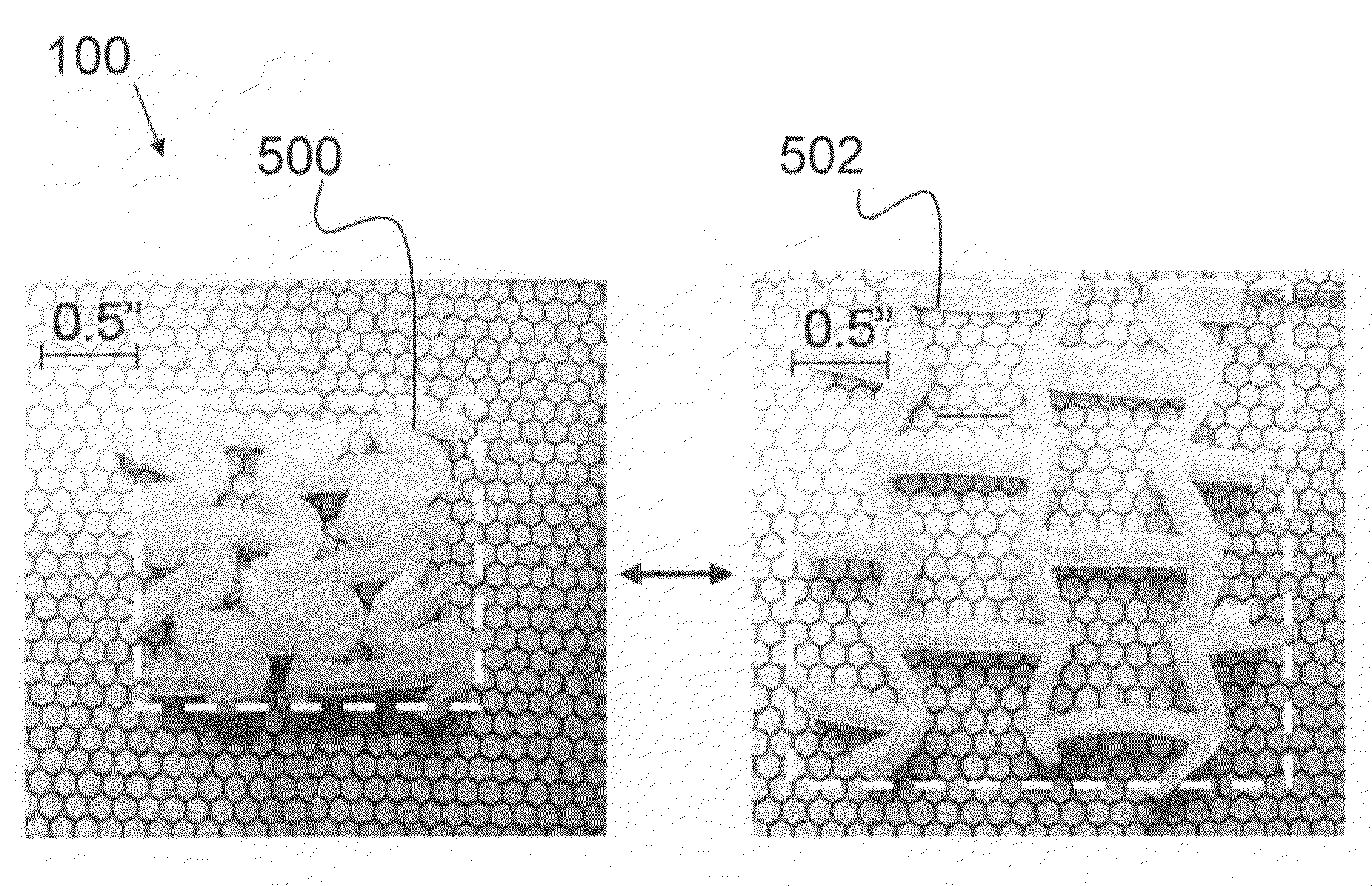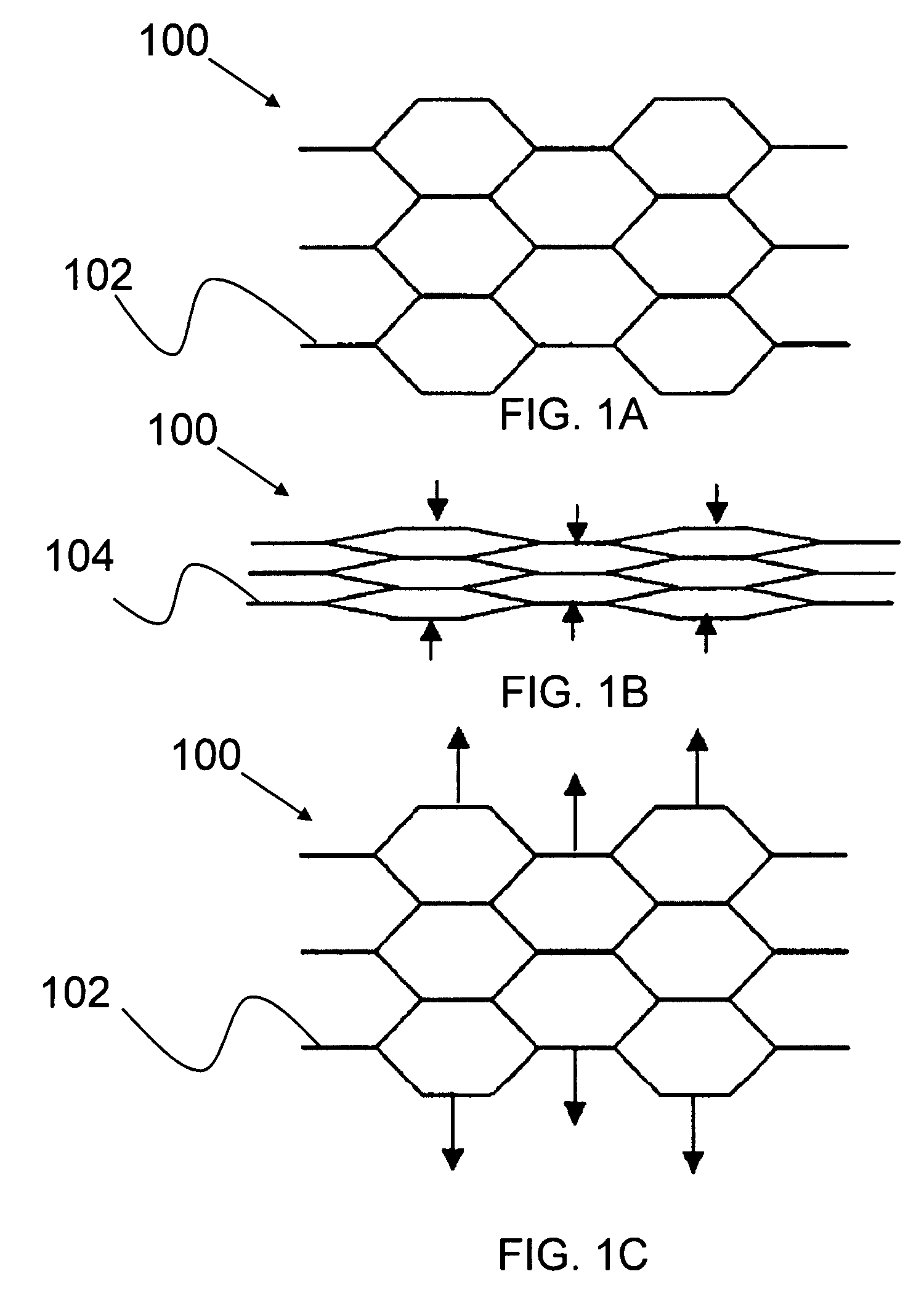Deformable variable-stiffness cellular structures
a cellular structure and variable technology, applied in the field of smart materials and intelligent structures, can solve the problems of low stiffness and strength, affecting the bending stiffness of the cellular structure, and affecting the shape and form of the structural component, so as to improve the bending stiffness over the cellular structure, the effect of facilitating strain and shape recovery
- Summary
- Abstract
- Description
- Claims
- Application Information
AI Technical Summary
Benefits of technology
Problems solved by technology
Method used
Image
Examples
Embodiment Construction
[0055]The present invention relates to a morphing cellular structure that includes a variable-stiffness material (VSM) that responds to external stimuli to change its stiffness state. More specifically, the present invention relates to deformable variable-stiffness cellular structure that can be deformed to a desired shape after varying the stiffness of the VSM, with the cellular structure thereafter being lockable in the desired shape by increasing the stiffness of the VSM.
[0056]The following description, taken in conjunction with the referenced drawings and / or tables, is presented to enable one of ordinary skill in the art to make and use the invention. Various modifications will be readily apparent to those skilled in the art, and the general principles defined herein may be applied to a wide range of aspects. Thus, the present invention is not intended to be limited to the aspects presented, but is to be accorded the widest scope consistent with the principles and novel features...
PUM
| Property | Measurement | Unit |
|---|---|---|
| stiffness | aaaaa | aaaaa |
| stiffness property | aaaaa | aaaaa |
| area | aaaaa | aaaaa |
Abstract
Description
Claims
Application Information
 Login to View More
Login to View More - R&D
- Intellectual Property
- Life Sciences
- Materials
- Tech Scout
- Unparalleled Data Quality
- Higher Quality Content
- 60% Fewer Hallucinations
Browse by: Latest US Patents, China's latest patents, Technical Efficacy Thesaurus, Application Domain, Technology Topic, Popular Technical Reports.
© 2025 PatSnap. All rights reserved.Legal|Privacy policy|Modern Slavery Act Transparency Statement|Sitemap|About US| Contact US: help@patsnap.com



